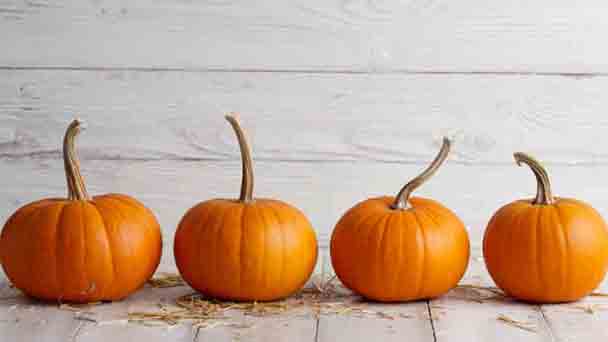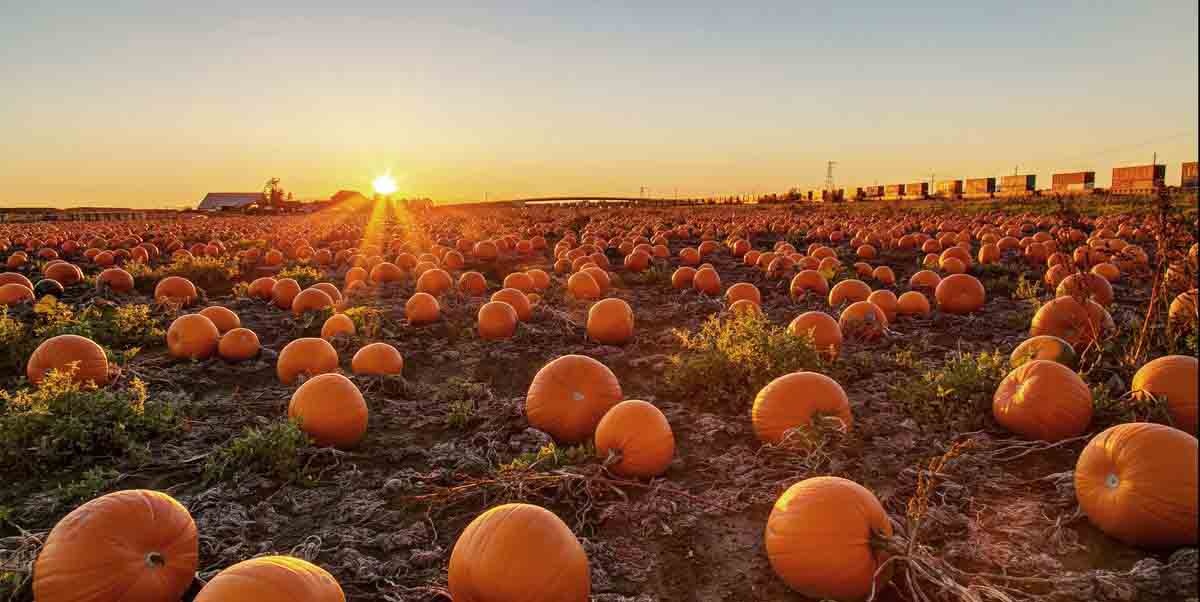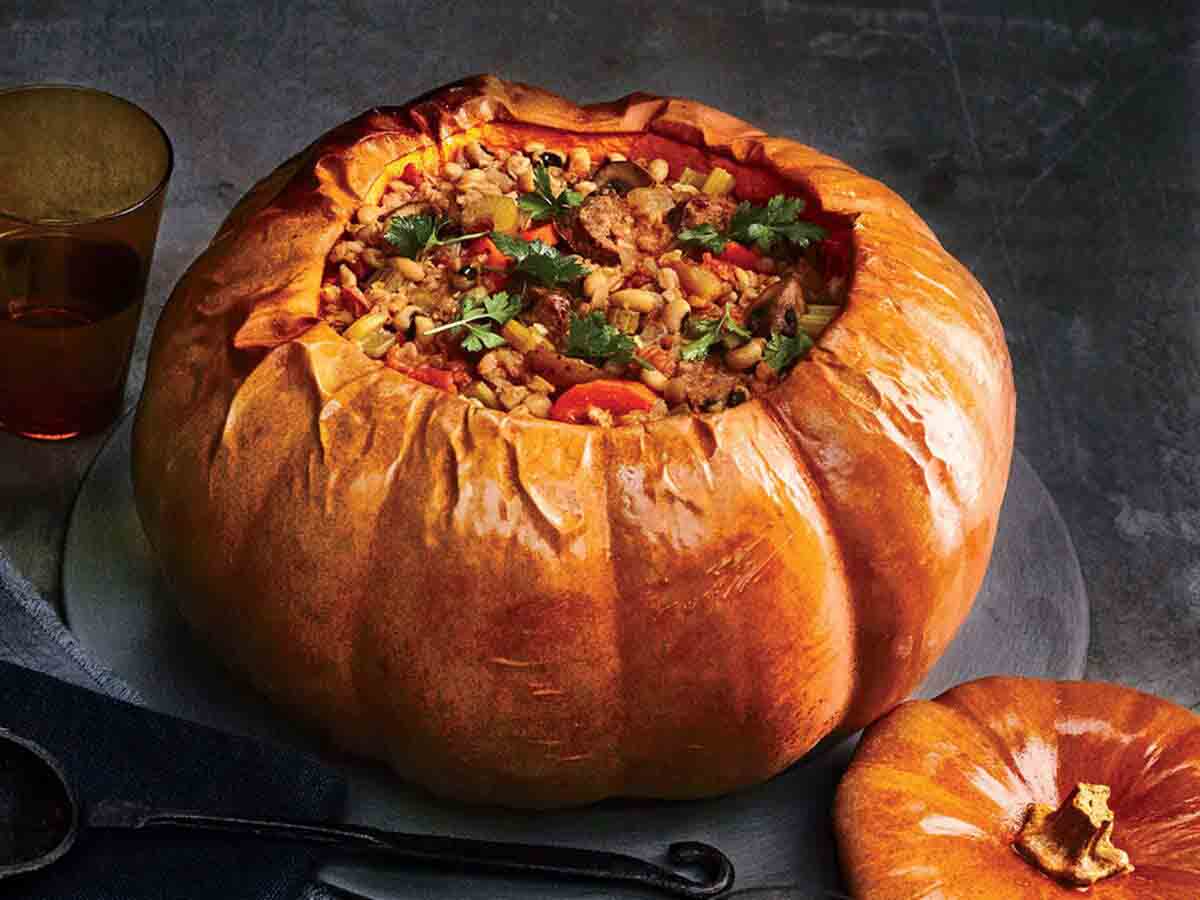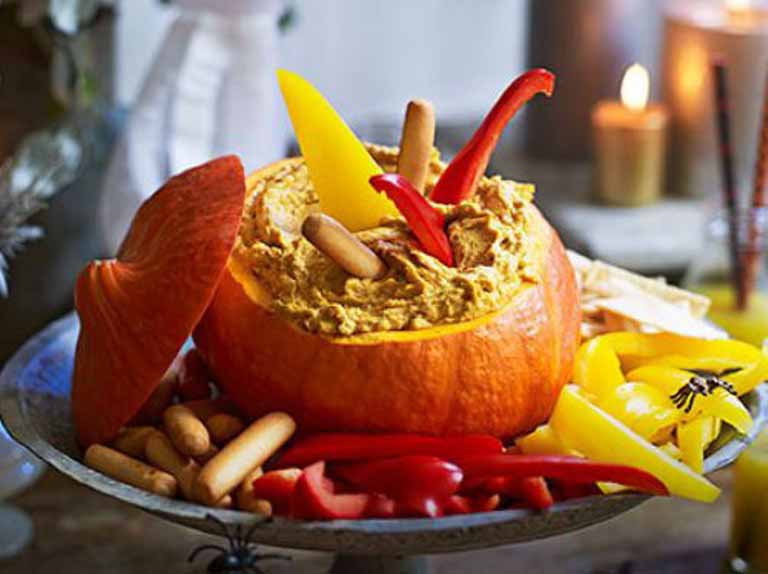Pumpkin Profile
Written by Joy
Nov 04 2020

Pumpkin, a species of Cucurbitaceae, an annual trailing herbaceous plant. Its stem is often rooted at the node, the petiole is thick, and the leaves of the pumpkin are broadly ovate or ovoid, slightly soft, with raised veins, slightly thicker tendrils, and hermaphrodite, with strong stalks, ribs and grooves, depending on the variety. , There are often several longitudinal grooves or none on the outside. Pumpkin has many seeds, long oval or oblong.
Pumpkin morphological characteristicsPumpkin growth habit and growing environment and distributionPumpkin efficacy and roleThe nutritional value of pumpkinThe therapeutic value of pumpkinPumpkin cultivation
Pumpkin originates from Mexico to Central America and is widely cultivated all over the world. Introduced to China in the Ming Dynasty, it is now widely planted throughout the north and south.The fruit of pumpkin can be used as a delicacy, and it can also replace food. The whole plant is also used for medicinal purposes. The seeds contain pumpkin seed amino acids, which have the effects of clearing heat, dehumidifying, and repelling worms. They can control and kill schistosomiasis. The vine has the effect of clearing heat. The melon has the effect of anti-fetus and cures toothache.
Pumpkin morphological characteristics

Pumpkins are monoecious. Male flowers are solitary, the calyx of pumpkin is tube-bell-shaped, 5-6 mm long, lobes strip-shaped, 1-1.5 cm long, pilose, and the upper part is enlarged into leaf-like; corolla yellow, bell-shaped, 8 cm long, 6 cm diameter, 5 mid-lobed, lobes recurved at the edge, wrinkled, apex acutely pointed; stamens 3, filaments glandular, 5-8 mm long, anthers close together, 15 mm long, with curved chambers. The female flowers of pumpkin are solitary. Ovary 1-loculed, style short, stigma 3, enlarged, apex 2-lobed.
The stalk of the pumpkin is thick, with ribs and grooves, 5-7 cm long, and the melon pedicle expands into a trumpet shape. The shape of the gourd fruit varies from species to variety, with several longitudinal grooves or none on the outside. Pumpkin has a large number of seeds, long ovoid or oblong, off-white, with thin edges, 10-15 mm long and 7-10 mm wide.
Pumpkin growth habit and growing environment and distribution

Pumpkin originates from Mexico to Central America and is widely cultivated all over the world. Asia has the most cultivated area, followed by Europe and South America, and China is generally cultivated.
Pumpkin efficacy and role
The nutritional value of pumpkin
Polysaccharides: Pumpkin polysaccharide is a non-specific immune enhancer, which can improve the body's immune function, promote the production of cytokines, and exert various regulatory functions on the immune system by activating complement and other means.Carotenoids: The abundant carotenoids in pumpkin can be converted into vitamin A with important physiological functions in the body, which has important physiological functions for the growth and differentiation of epithelial tissues, maintaining normal vision, and promoting bone development.
Pectin: The pectin in pumpkin can regulate the absorption rate of food in the stomach and slow down the absorption of sugars. Soluble cellulose can delay the emptying of food in the stomach and control the rise of blood sugar after meals. Pectin can also combine with excess cholesterol in the body to reduce cholesterol absorption and lower blood cholesterol concentration.

Amino acids: Pumpkin contains a variety of amino acids needed by the human body, among which lysine, leucine, isoleucine, phenylalanine, and threonine are high in content. In addition, the genotype of ascorbate oxidase in pumpkin is the same as that in tobacco, but the activity is significantly higher than that in tobacco, indicating that the content of immunologically active protein in pumpkin is higher.
Pumpkin leaves: Contain a variety of vitamins and minerals, of which the content of vitamin C is very high, which makes it have excellent heat-clearing and detoxifying effects. In summer, boiling water with pumpkin leaves can relieve heat and trouble.
The therapeutic value of pumpkin

⑵ Protect the gastric mucosa and help digestion: The pectin contained in pumpkin can also protect the gastrointestinal mucosa from the stimulation of rough foods and promote the healing of the ulcer surface, which is suitable for patients with gastric disease. The ingredients contained in pumpkin can promote bile secretion, strengthen gastrointestinal motility, and help food digestion.
⑶ Eliminate carcinogens: Pumpkin can eliminate the mutation effect of carcinogen nitrosamines, has anti-cancer effects, and can help restore liver and kidney functions, and enhance the regeneration of liver and kidney cells.
Pumpkin cultivation

Latest Updated
- Benefits of Bugleweed - 7 Science-backed Health Benefits
- Bugleweed Dangers & Side Effects - Is It Poisonous?
- How to Plant Evergreen Trees - What You Should Know
- When to Plant Evergreens - Grow Guide for Evergreen Trees
- 12 Wonderful Evergreen Shrubs for Your Garden
- 12 Popular Evergreen Plants with Pictures for Beginners
- When And How To Prune A Lilac Bush Like a Pro
- How to Grow & Care for Lilac Vine (Hardenbergia Violacea)
- Japanese Lilac Tree (Syringa Reticulata) Care & Propagation Guide
- Shumard Oak Pros and Cons - What to Know
Popular Articles
- Winter maintenance of Antirrhinum Majus
- How to Grow Terminalia Mantaly Tree
- How to Grow and Care for Crossostephium Chinense
- How to grow Antirrhinum Majus in spring
- Peristeria Elata (Dove Orchid) Profile: Info & Care Guide
- Underwatered Snake Plant (Sansevieria Trifasciata) - Signs And How To Fix
- How to Care for Brazilian Jasmine Plant (Mandevilla Sanderi)
- How to Grow & Care for Graptopetalum Purple Delight in Summer
- Rosa Chinensis (China Rose): Plant Growing & Care Tips
- How to Care for Baby Sun Rose (Aptenia Cordifolia)